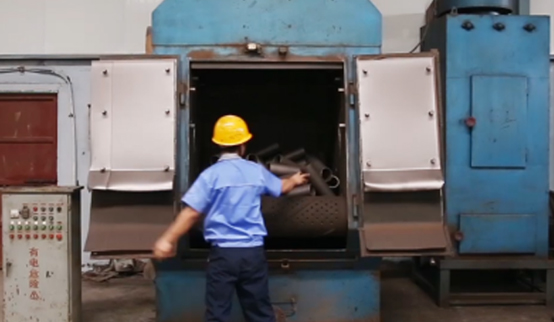 Afrikaans
Afrikaans  Albanian
Albanian  Amharic
Amharic  Arabic
Arabic  Armenian
Armenian  Azerbaijani
Azerbaijani  Basque
Basque  Belarusian
Belarusian  Bengali
Bengali  Bosnian
Bosnian  Bulgarian
Bulgarian  Catalan
Catalan  Cebuano
Cebuano  Corsican
Corsican  Croatian
Croatian  Czech
Czech  Danish
Danish  Dutch
Dutch  English
English  Esperanto
Esperanto  Estonian
Estonian  Finnish
Finnish  French
French  Frisian
Frisian  Galician
Galician  Georgian
Georgian  German
German  Greek
Greek  Gujarati
Gujarati  Haitian Creole
Haitian Creole  hausa
hausa  hawaiian
hawaiian  Hebrew
Hebrew  Hindi
Hindi  Miao
Miao  Hungarian
Hungarian  Icelandic
Icelandic  igbo
igbo  Indonesian
Indonesian  irish
irish  Italian
Italian  Japanese
Japanese  Javanese
Javanese  Kannada
Kannada  kazakh
kazakh  Khmer
Khmer  Rwandese
Rwandese  Korean
Korean  Kurdish
Kurdish  Kyrgyz
Kyrgyz  Lao
Lao  Latin
Latin  Latvian
Latvian  Lithuanian
Lithuanian  Luxembourgish
Luxembourgish  Macedonian
Macedonian  Malgashi
Malgashi  Malay
Malay  Malayalam
Malayalam  Maltese
Maltese  Maori
Maori  Marathi
Marathi  Mongolian
Mongolian  Myanmar
Myanmar  Nepali
Nepali  Norwegian
Norwegian  Norwegian
Norwegian  Occitan
Occitan  Pashto
Pashto  Persian
Persian  Polish
Polish  Portuguese
Portuguese  Punjabi
Punjabi  Romanian
Romanian  Russian
Russian  Samoan
Samoan  Scottish Gaelic
Scottish Gaelic  Serbian
Serbian  Sesotho
Sesotho  Shona
Shona  Sindhi
Sindhi  Sinhala
Sinhala  Slovak
Slovak  Slovenian
Slovenian  Somali
Somali  Spanish
Spanish  Sundanese
Sundanese  Swahili
Swahili  Swedish
Swedish  Tagalog
Tagalog  Tajik
Tajik  Tamil
Tamil  Tatar
Tatar  Telugu
Telugu  Thai
Thai  Turkish
Turkish  Turkmen
Turkmen  Ukrainian
Ukrainian  Urdu
Urdu  Uighur
Uighur  Uzbek
Uzbek  Vietnamese
Vietnamese  Welsh
Welsh  Bantu
Bantu  Yiddish
Yiddish  Yoruba
Yoruba  Zulu
Zulu conveyor carrying roller
The Role of Conveyor Carrying Rollers in Material Handling Systems
In the realm of material handling, conveyor systems play a crucial role in transporting goods efficiently and safely. At the heart of these systems, conveyor carrying rollers are vital components that facilitate the movement of materials. These rollers are essentially cylindrical devices that support the conveyor belt and reduce the friction between the belt and the underlying framework, ensuring smooth operation and minimizing wear and tear.
Understanding Conveyor Carrying Rollers
Conveyor carrying rollers are typically made of high-strength materials such as steel or durable plastic. They come in various sizes and designs to accommodate different types of conveyor belts and the specific requirements of the material being transported. The primary function of these rollers is to provide a reliable base for the conveyor belt, allowing it to move freely and efficiently while carrying loads ranging from lightweight packages to heavy machinery.
Types of Carrying Rollers
There are several types of conveyor carrying rollers available, each designed for specific applications
. The most common types include1. Idler Rollers These are the most frequently used rollers in conveyor systems, providing support and stability to the belt without any power input. They are crucial in maintaining the belt's alignment and preventing sagging.
2. Drive Rollers Unlike idler rollers, drive rollers are powered and are responsible for driving the conveyor belt forward. They are typically located at the head of the conveyor system and work in conjunction with a motor.
conveyor carrying roller

3. Return Rollers These rollers support the belt on its return journey after material has been discharged. They help reduce the tension on the belt and ensure a smooth return path.
4. Impact Rollers Designed to withstand heavy loads and shocks, impact rollers are used in areas where materials are loaded onto the conveyor. They help absorb the impact and prevent damage to the belt.
Importance of Quality and Maintenance
The quality of conveyor carrying rollers significantly affects the efficiency of a conveyor system. High-quality rollers are essential for minimizing downtime and optimizing performance. Over time, carrying rollers can wear out due to constant exposure to heavy loads and environmental factors. Regular maintenance, including inspection and replacement of worn-out rollers, is crucial for ensuring the longevity and reliability of the conveyor system.
Implementing a preventive maintenance schedule can help identify potential issues before they escalate, saving time and costly repairs in the long run. Lubrication, adjusting tension, and cleaning debris from the rollers are all vital aspects of maintaining conveyor carrying rollers.
Conclusion
In summary, conveyor carrying rollers are an indispensable component of material handling systems, providing the necessary support for efficient operation. With different types catering to various needs, it is essential to choose the right rollers for specific applications. Additionally, regular maintenance and attention to roller quality are crucial for ensuring the smooth functioning of conveyor systems. As industries continue to evolve and demand higher efficiency, the importance of reliable conveyor carrying rollers will only grow, solidifying their pivotal role in modern manufacturing and logistics operations.
-
Revolutionizing Conveyor Reliability with Advanced Rubber Lagging PulleysNewsJul.22,2025
-
Powering Precision and Durability with Expert Manufacturers of Conveyor ComponentsNewsJul.22,2025
-
Optimizing Conveyor Systems with Advanced Conveyor AccessoriesNewsJul.22,2025
-
Maximize Conveyor Efficiency with Quality Conveyor Idler PulleysNewsJul.22,2025
-
Future-Proof Your Conveyor System with High-Performance Polyurethane RollerNewsJul.22,2025
-
Driving Efficiency Forward with Quality Idlers and RollersNewsJul.22,2025





























